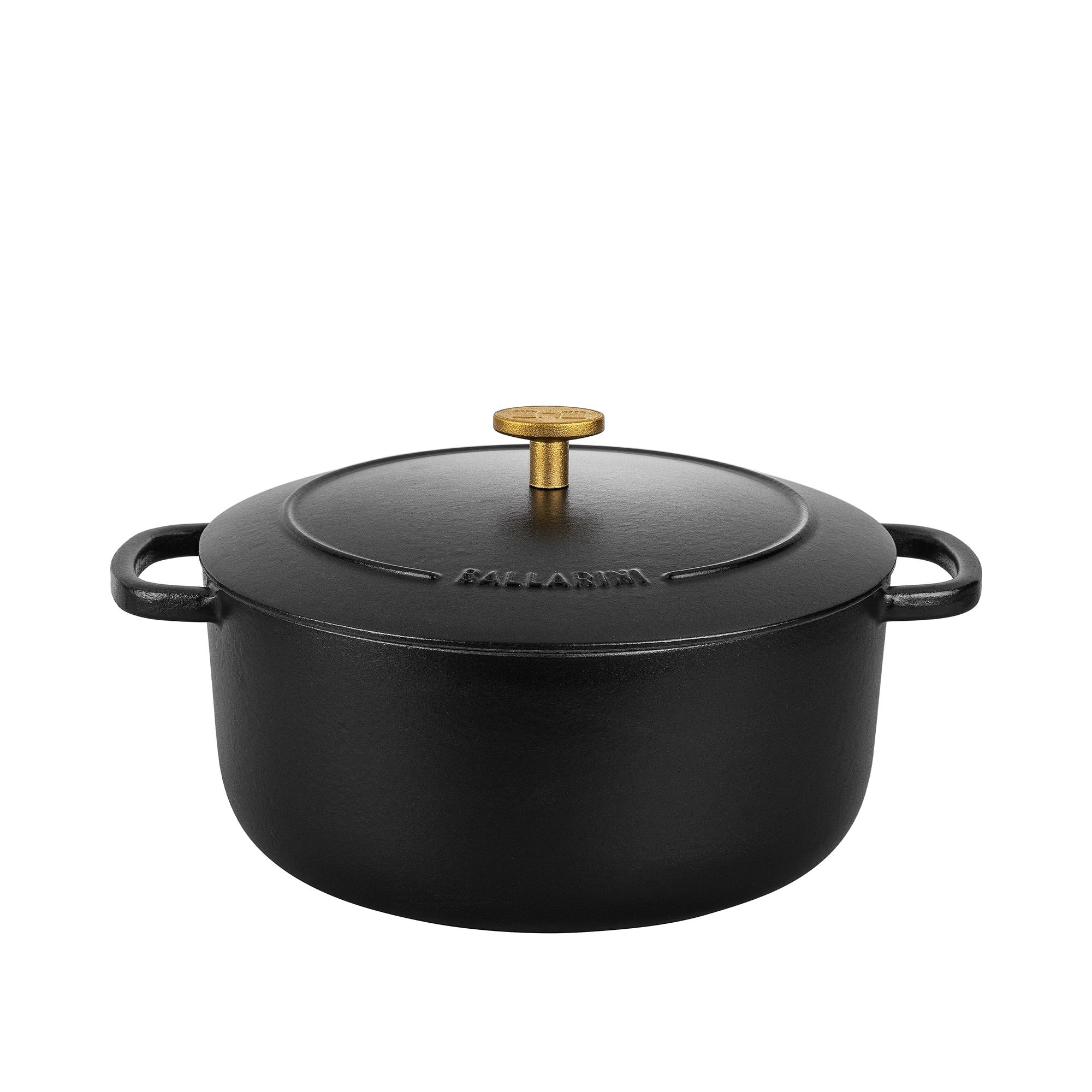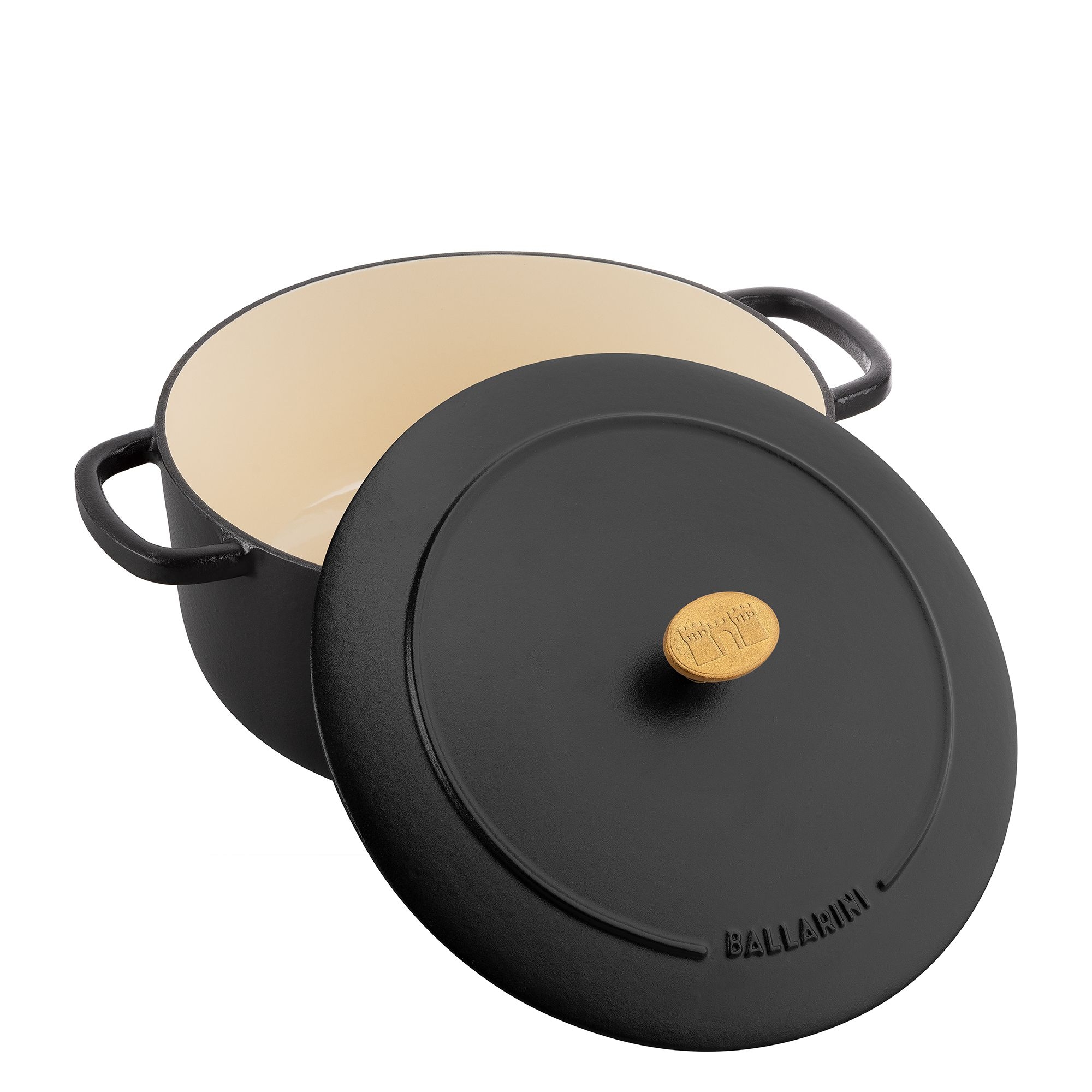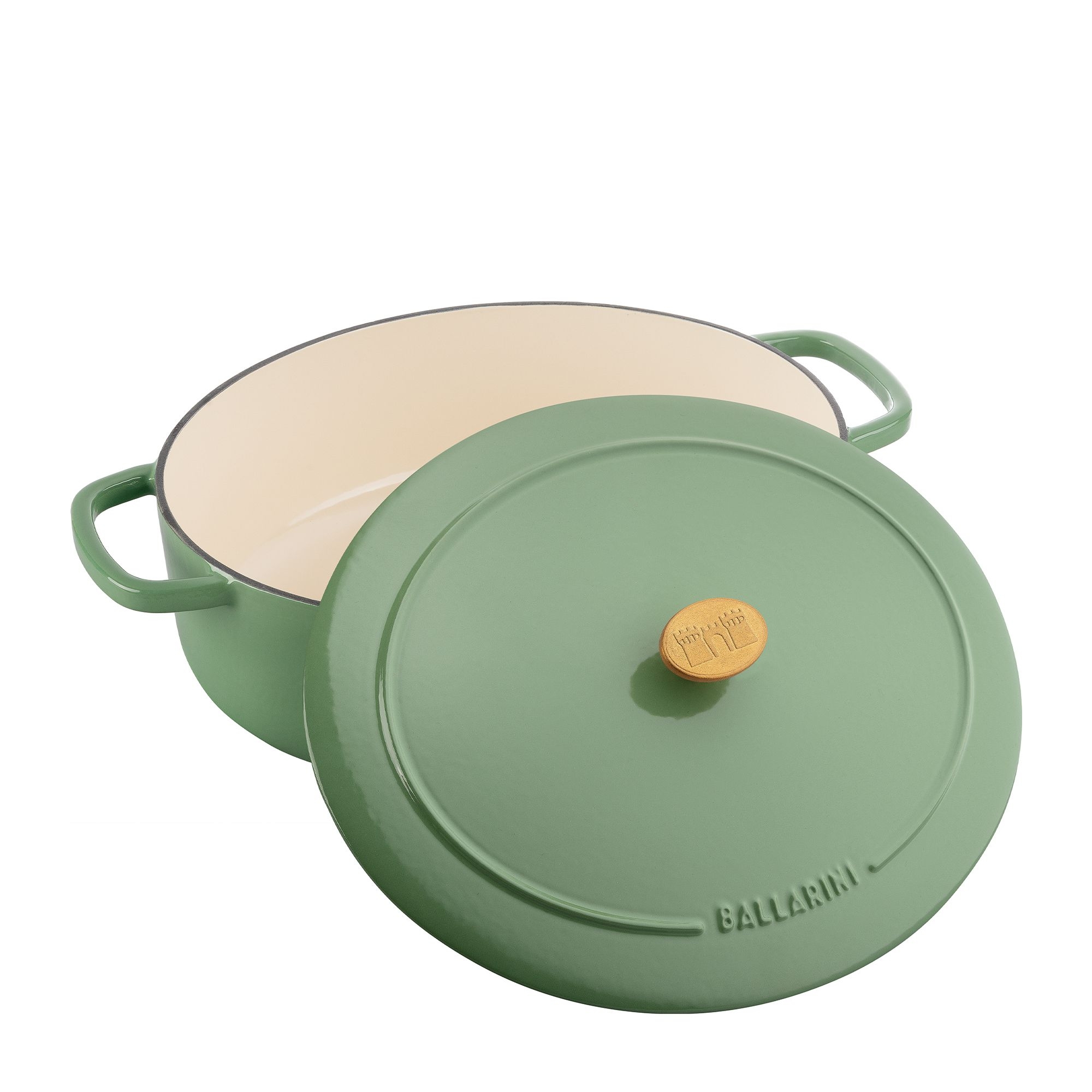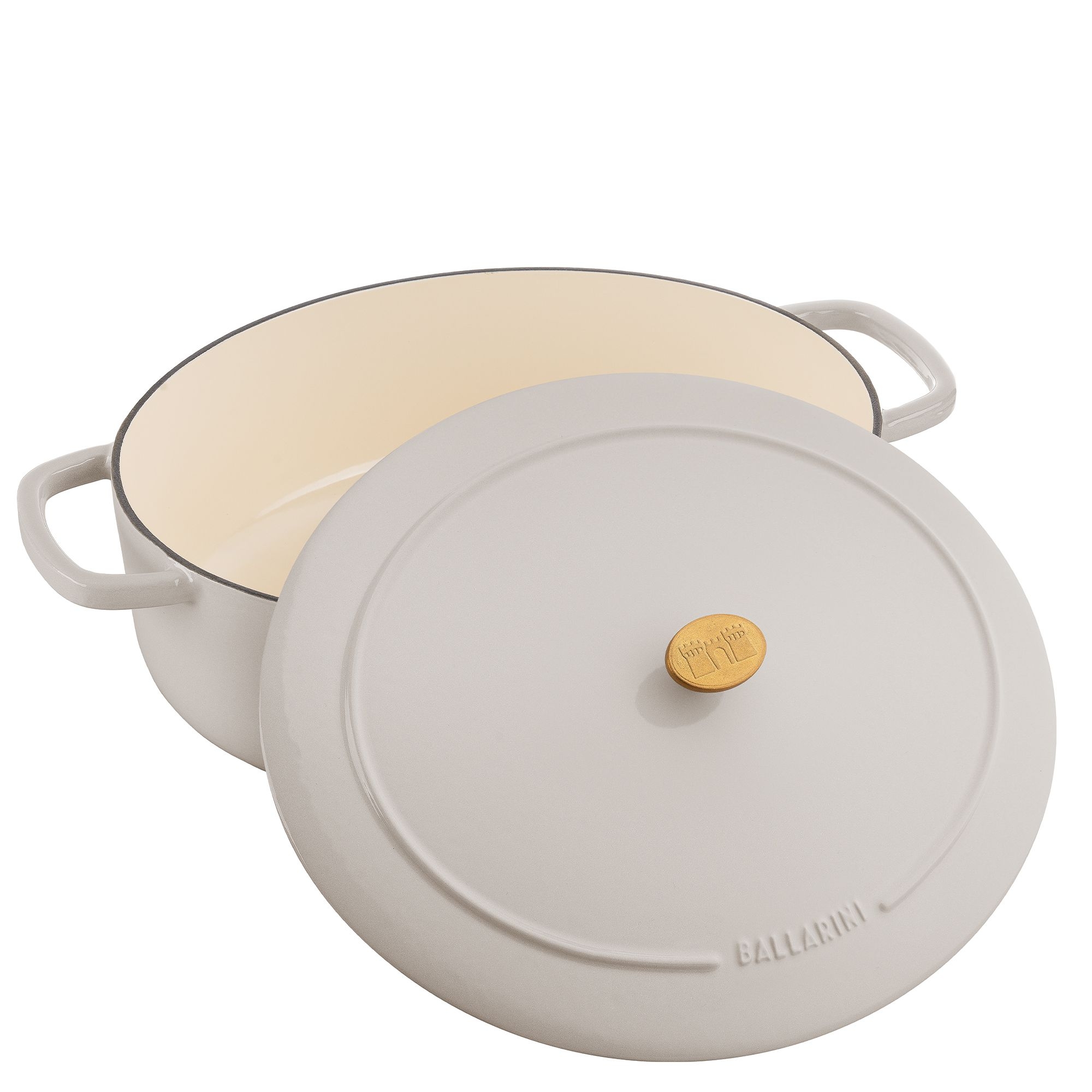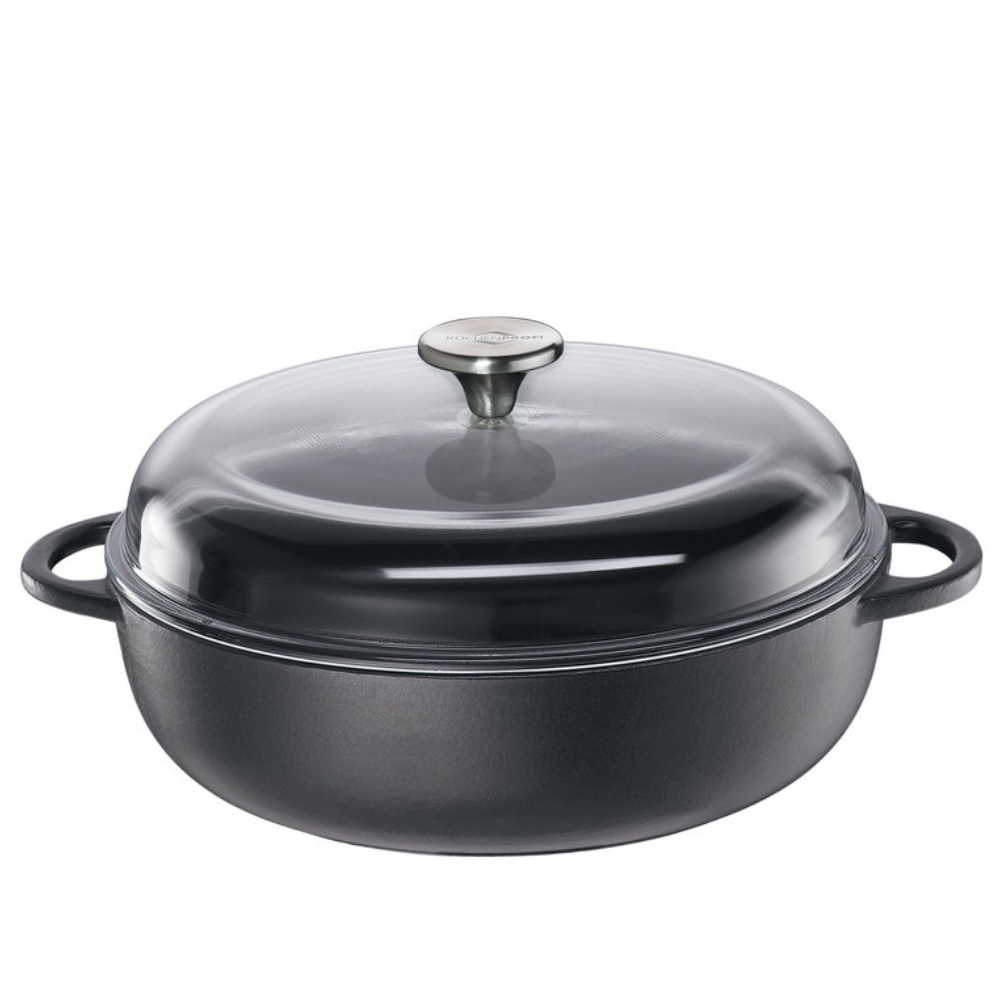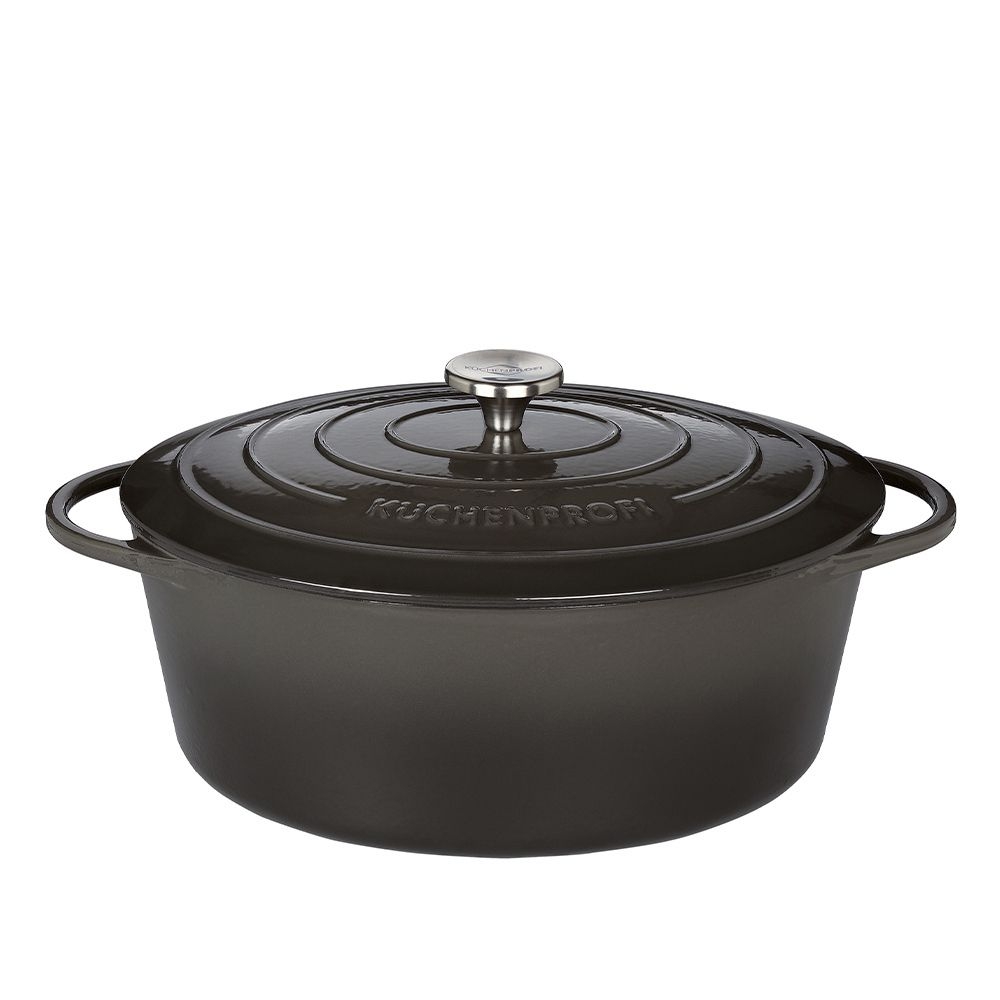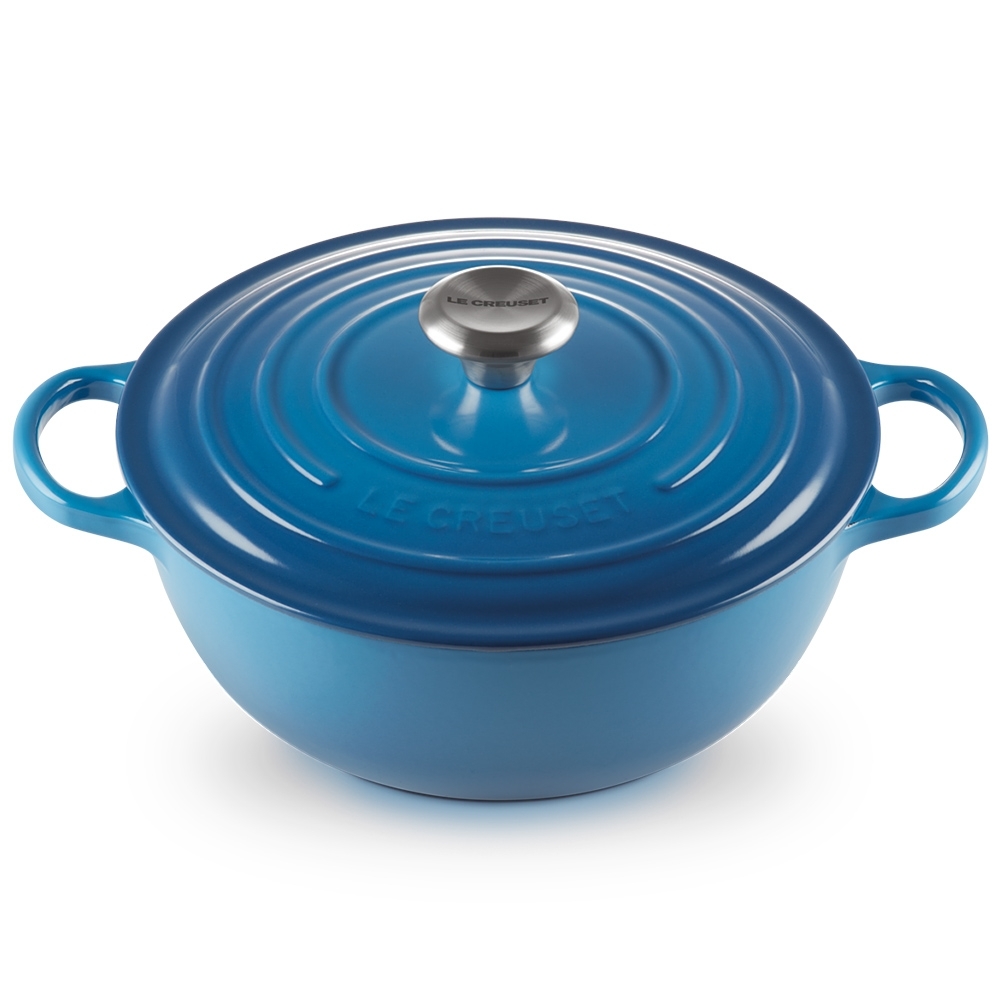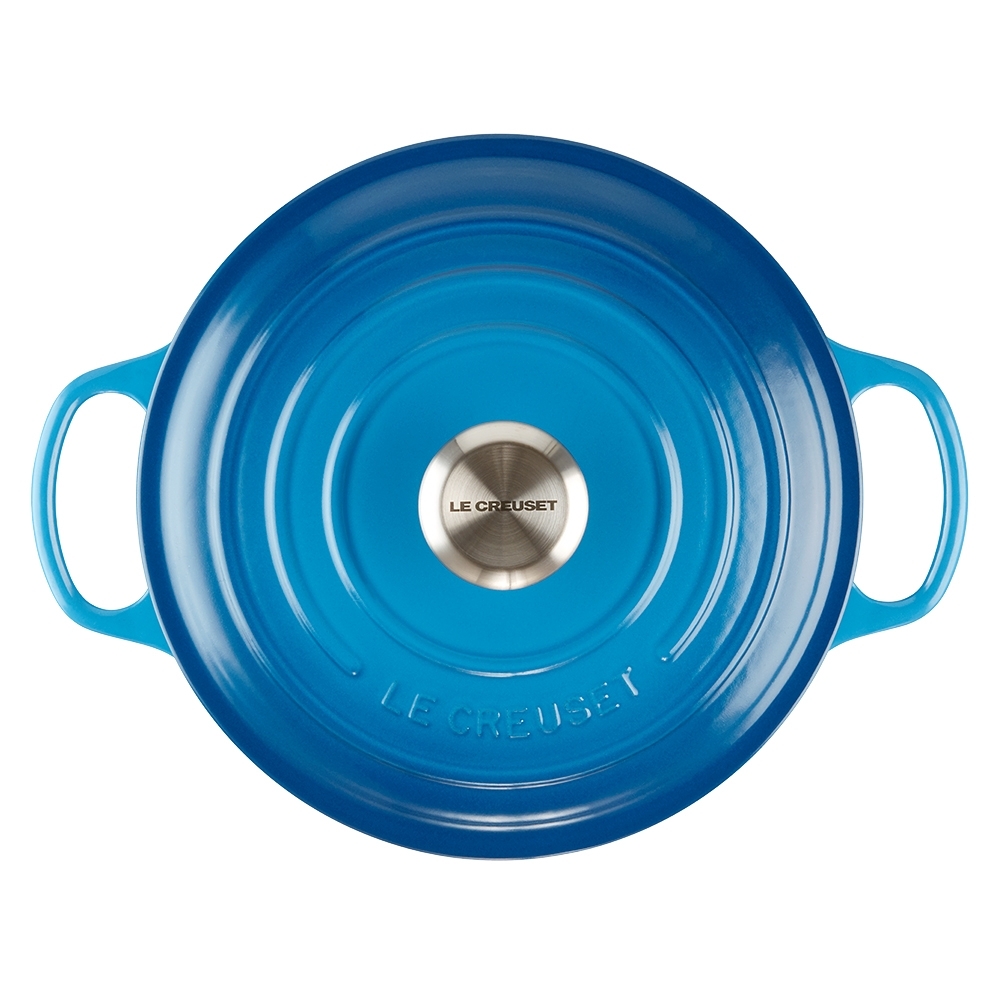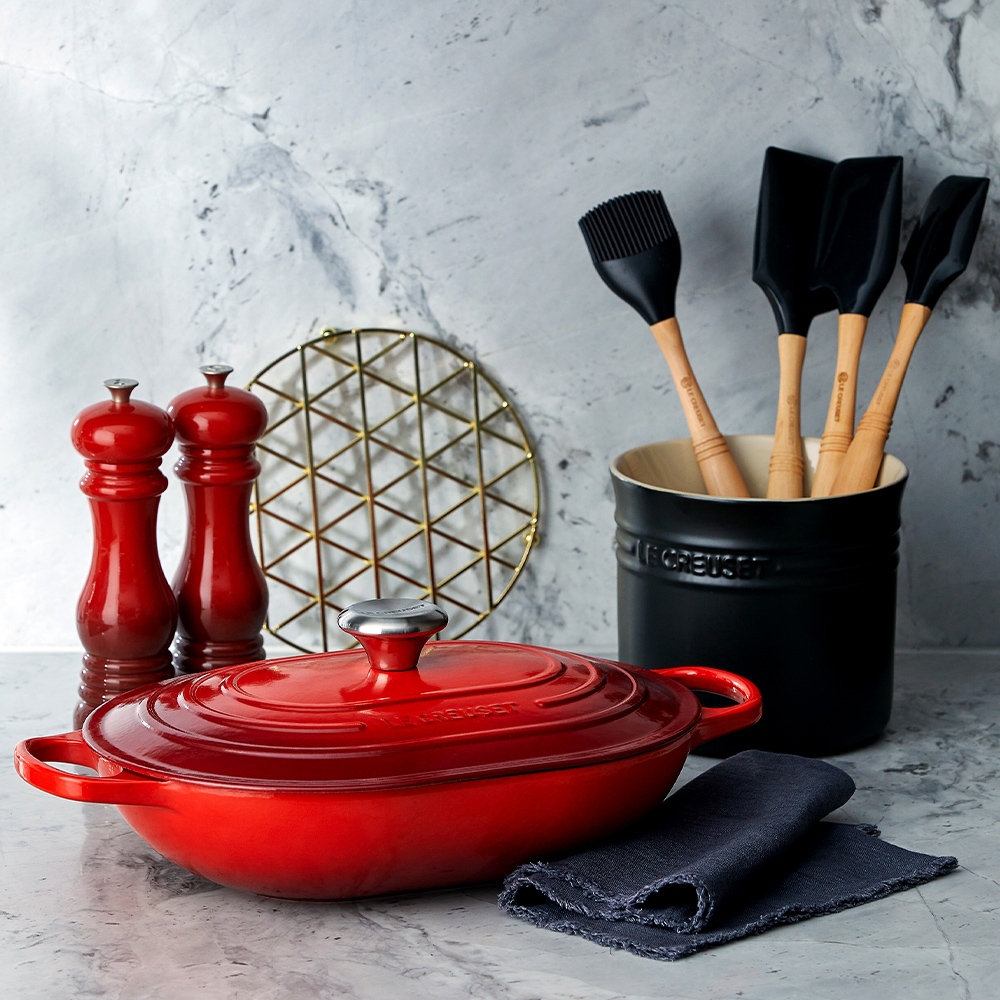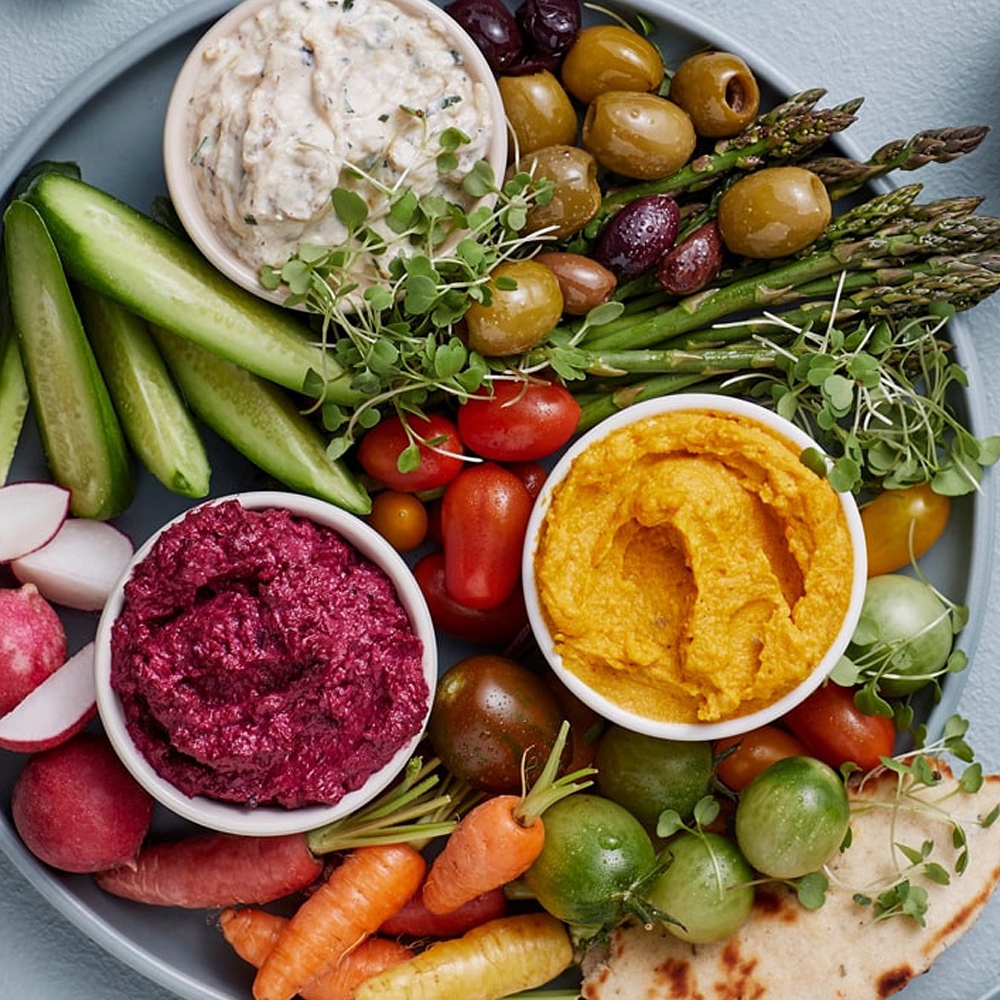Le Creuset - Signature Oval Wide French Oven 27 cm - Black
Le Creuset's Wide French Oven brings the taste of Northern Italy straight to your kitchen. The shallow design of the pan ensures efficient evaporation of liquids and the sides are angled to fit perfectly with a risotto spatula. Even heat distribution guarantees that your risotto will cook perfectly time after time.
Ø 27 cm x h 13,5 cm - 3,4 l
4-6 serving
Le Creuset Cast iron:
is perfect for frying, boiling, simmering, cooking, marinating and food storage after cooking
can be used on the stovetop, in the oven and under the grill
is suitable for use on all heat sources
Unveiling the Evolution of a Classic...
NEW Le Creuset Signature Cast Iron Casseroles
Le Creuset is proud to introduce the new Signature Cast Iron Casseroles as the next evolution of its enamelled cast iron cookware.
This updated kitchen classic features a range of new design enhancements especially developed to offer even better durability, versatility and comfort of use when cooking. Available in an extended selection of shapes, sizes and iconic colours, new features include:
easy-grip, 45% larger handles distribute weight more evenly and make it easier to carry from hob to oven to table even when wearing bulky oven gloves
easy clean, toughened enamel interior is now even more durable to resist staining, dulling and other wear and tear and makes cleaning even faster and easier
stylish, heat-resistant stainless steel knob withstands any oven temperature for total peace of mind and is more ergonomic for a more comfortable, natural grip
enhanced, tight-fitting lid with built-in stabilisers seal in flavour with a more secure fit and has enhanced rings and branding for added beauty
Individually cast in sand moulds and hand crafted at the original foundry in France since 1925, each piece of Le Creuset enamelled cast iron cookware is unique and perfectly finished to deliver outstanding performance time after time. Suitable for use on all hob types, including induction, and in the oven, Le Creuset cast iron casseroles are also perfect for serving as cast iron keeps food warmer for longer at the table.
Cooking with cast iron
Enameled cast iron is a remarkable and robust material that performs well with modern requirements for food preparation and cooking. Whether you choose to stir-fry, slow-cook a casserole, sear a steak or bake a cake, there is a shape that is suitable. Cast iron performs well for either slow cooking or high-temperature searing.
Cast iron can be used reliably on any heat source, including induction, and with any oven or grill. It has the ability to retain heat efficiently, which allows for use of lower heat settings in stovetop and oven cooking. On the table, a hot covered dish will keep food hot for second servings.
Cast iron can also be used to keep foods cold. A chilled dish becomes an ideal cold food server on a hot summer day. It can also be placed in the freezer for food storage or advanced food preparation.
Heat recommendations
Le Creuset cast iron cookware can be used on all heat sources including gas, electric solid plate or radiant ring, vitro-ceramic glass, induction, and ovens fired by gas, oil, coal or wood. When using any glass-topped stove, always lift the pan when moving it; never slide it, as this may damage the stovetop or the base of the pan.
Always match the pan’s base size to the stovetop heat zone to maximize efficiency, and to prevent overheating of the pan sides or damage to the handles.
Gas flames must always be confined to the base area, and must never extend around the sidewalls of the pan. Long handles should be positioned safely where they do not hang over the front of the stove or other heat zones.
Cooking heats
Medium or low heat will provide the best results for cooking, including frying and searing. Allow the pan to heat gradually and thoroughly for even and efficient cooking results. Once the pan is hot, almost all cooking can be continued on lower settings.
High heat temperatures should only be used for boiling water for vegetables or pasta, or for reducing the consistency of stocks or sauces. High heats should never be used to preheat a pan before lowering the heat for cooking. Cast iron retains heat so efficiently that overheating will cause food to burn or stick.
Oils and fats
With the exception of Grills, the enamel surface is not ideal for dry cooking.
Your choice of liquid, oil, fat or butter should completely cover the base before heating begins. Do not leave the pan unattended, and do not allow a pan to boil dry, as this may permanently damage the enamel.
For deep frying, the maximum oil level must not exceed 1/3 full. This depth allows sufficient height above the oil for it to rise once foods are added. An oil frying thermometer should be used for safety, and a lid should be readily available in case of overheating or flaring.
Hot pans
Always place a hot pan on a wooden board, trivet or Le Creuset silicone mat-never on an unprotected surface.
Oven use
The black phenolic lid knobs on our Signature range of enameled cast iron are heat-resistant to 480°F / 250°C. The black phenolic lid knobs on our Classic range of enameled cast iron are heat-resistant to 375°F / 190°C. Products with integral cast iron handles or stainless steel knobs can be used at any oven temperature. Pans with wooden handles or knobs must not be placed in the oven.
Do not place any cookware on the floors of ovens with cast iron linings. This will increase the cooking temperature inside the oven, resulting in an increased cooking rate with detrimental effects on food. Do not drag cookware across the floor of the liners. For best results always place on a shelf or rack.
Cooking tips for grilling
Grills may be preheated to reach a hot surface temperature for searing and caramelization. This advice does not apply to any other products.
For correct grilling and searing, it is important that the cooking surface is sufficiently hot before cooking begins. Sear lines from ribbed grills will not be produced if the pan surface is too cool, or if the food is too wet. Place the empty pan on medium heat and allow it to heat for several minutes. Do not add oil to the cold pan-the oil may become too hot and smoke.
Take a few drops of water on your fingers and scatter over the hot surface. If they sizzle and evaporate almost immediately it is hot and ready for use. If the water produces steam and has no sizzle, heat the pan a little longer and repeat the water test again. When the surface is hot enough, lightly oil it with cooking spray or brush it with oil using a Le Creuset silicone basting brush. Vegetable, ground nut or corn oils are recommended. Olive oil may cause excessive smoking.
Once a patina covers the cooking surface very little oil will be necessary. For distinct sear lines, leave the food undisturbed on the surface for several minutes. If the food is moved too quickly the lines will be poor, and steam from the food may be released onto the surface.
Any food for grilling or searing must be quite dry before it is placed on the hot surface. Wet foods will not achieve good sear lines and may result in a steamed appearance and flavor. Use paper towels to pat off excess moisture from foods. Oil can then be brushed over the food if desired. Foods that have been marinated should also have excess moisture removed with paper towels.
Cooking tips for shallow frying and sauteing
For frying and sauteing, the fat should be hot before adding food. Bring the pan and fat or oil to the correct temperature together.
Oil is hot enough when there is a gentle ripple in its surface. For butter and other fats, bubbling or foaming indicates the correct temperature. If either begins smoking, or if butter begins browning, it is too hot and should be cooled slightly before proceeding. The quickest way to do this is to remove the pan from the heat source for a few moments. For longer shallow frying a mixture of oil and butter gives excellent results.
Satin Black
Satin Black enamel can be found on skillets, grills, frying pans, saute pans, woks, tagines and a number of round and oval casserole dishes. Satin Black enamel has a smooth feel but is not as glossy as other light-colored interior enamel finishes. It has been specially designed for higher surface temperature cooking, which is not the same as simply using a piece on a high heat.
With cast iron, higher surface temperatures can be achieved by allowing any piece to heat thoroughly on a medium setting. This makes the satin black interior ideal for frying, grilling and searing.
Satin Black enamel will keep its good looks and allow a patina to build on its surface with continued use. A patina is the result of the natural oils and fats from foods baking on to the hot surface. The patina should not be cleaned off, as it enhances the cooking performance and the release of foods. It also reduces the need for surface oiling.
With the higher surface temperatures achieved during frying, grilling and searing, sugars and some enzymes will cause caramelization. This not only aids in the retention of moisture and flavor, but also produces the sear lines and crusty exterior on grilled meats.













